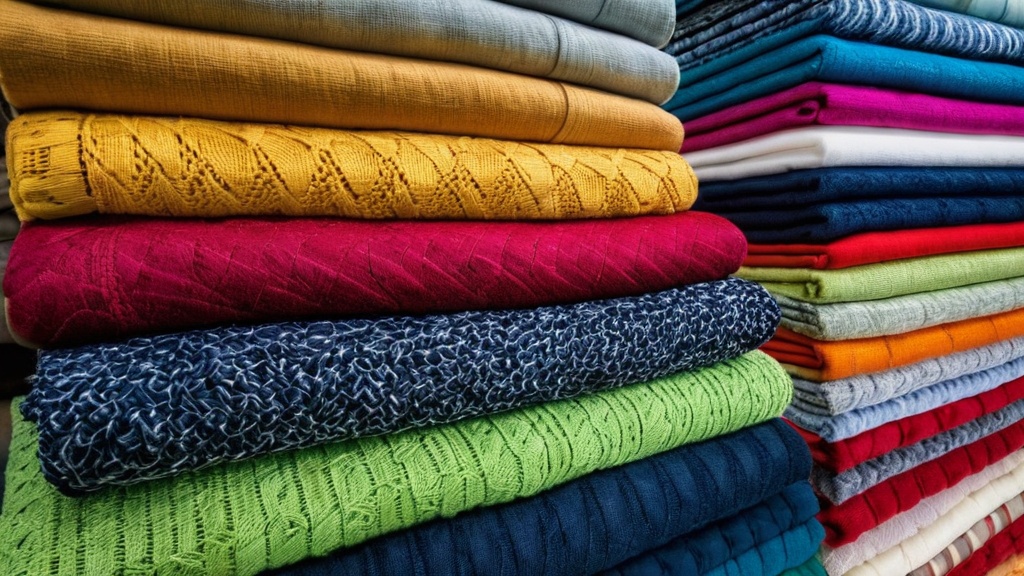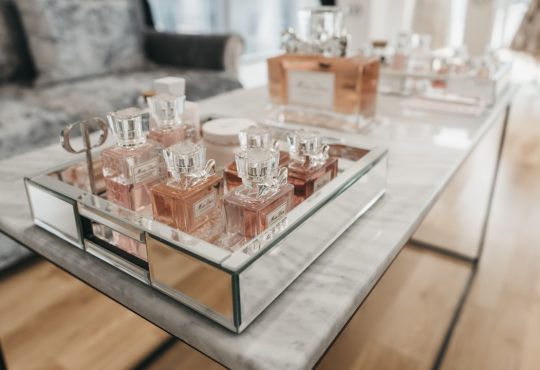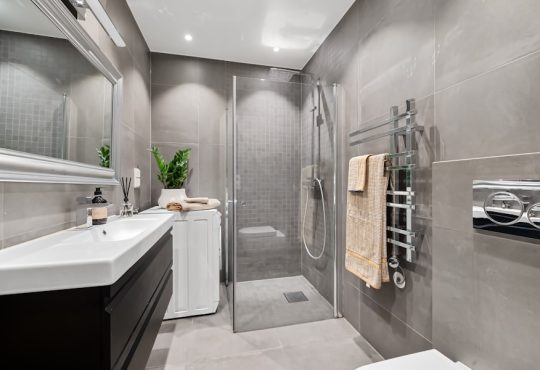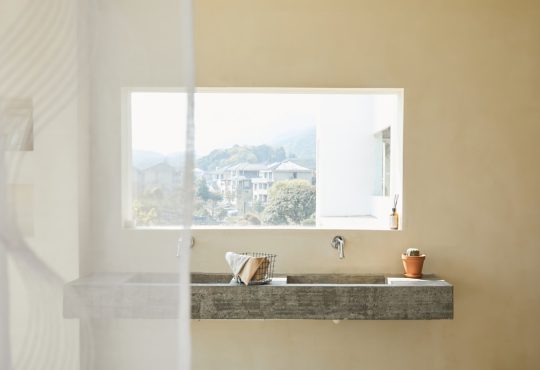
Learn how to choose the right textiles for your living space with confidence
Choosing the right textiles for your living space can feel like a daunting task. You walk into a fabric store or browse online, and you’re met with a sea of options—countless colors, patterns, and materials. It’s easy to feel overwhelmed and retreat to the safety of plain beige. But the textiles you choose are more than just functional items; they are the clothes your room wears. They set the mood, provide comfort, and tell a story about who you are. This guide will provide you with the knowledge and a clear framework to navigate this world, helping you select the perfect fabrics for your home with clarity and confidence.
Before you can choose the right fabric, you must first understand the job it needs to do. Textiles are the great multitaskers of interior design. They absorb sound, offer privacy, provide comfort, and are one of the most effective ways to introduce color and personality into a room. Think of your hard surfaces—the floors, walls, and wooden furniture—as the skeleton of your living space. The textiles are the muscle and skin, giving it shape, warmth, and life.
More Than Just Decoration
The impact of textiles goes beyond the visual. The plush feel of a velvet sofa invites you to relax and unwind. The crisp coolness of linen curtains suggests a breezy, casual atmosphere. A thick, woolly rug underfoot makes a room feel grounded and cozy, muffling footsteps and creating a sense of peace. These materials engage our sense of touch, profoundly affecting how we experience a space on a subconscious level. The choices you make will directly influence whether your living room feels like a formal, elegant showroom or a comfortable, welcoming haven for family and friends.
The Main Players: A Textile Inventory
Your living space is an ecosystem of different textiles, each with its own role. Identifying them is the first step toward creating a cohesive plan. The primary textile elements you will be working with are:
- Upholstery: This is the fabric on your largest furniture pieces, like sofas and armchairs. It’s the anchor of your room’s textile scheme and needs to be chosen with durability in mind.
- Curtains or Drapery: These frame your windows and control light. Their material will determine how they hang (their “drape”) and how much privacy and insulation they provide.
- Rugs: A rug defines a seating area, adds warmth, and can be the largest single source of pattern and color in a room.
- Throw Pillows and Cushions: These are the accessories of your living room. They are a low-commitment, high-impact way to introduce new trends, bold colors, or interesting textures.
- Throws and Blankets: Draped over a sofa or chair, these add a layer of comfort and an opportunity for a contrasting texture or a pop of color.
Function First: Matching Fabric to Lifestyle
The most beautiful fabric in the world will be a disappointment if it doesn’t suit your lifestyle. The single most important rule in choosing textiles is to be honest about how you live. A pristine white silk sofa might look stunning in a magazine, but it will become a source of constant anxiety in a home with pets, young children, or a fondness for red wine. Practicality must be your co-pilot on this journey.
The High-Traffic Test: Durability is Key
For items that receive daily use, like your sofa and armchairs, durability is non-negotiable. The ability of a fabric to withstand friction and wear is often measured by a “rub test.” In North America, you may see a Wyzenbeek rating (measured in “double rubs”), while the Martindale test is common in Europe. For a family sofa, look for a fabric rated for at least 15,000 double rubs (heavy duty). For even more intense use, 30,000 or more is ideal. These ratings are usually available from the furniture manufacturer or fabric supplier. Tightly woven fabrics and those made from durable synthetic fibers or blends tend to perform best under pressure.
Considering Light and Privacy
The job of your window treatments is to manage sunlight and provide privacy. If your living room gets intense, direct sunlight, you will need to choose fabrics that are resistant to fading. Silk, for example, is beautiful but can degrade quickly in the sun. Synthetic fibers like polyester and acrylic, or natural fibers like tightly woven cotton canvas, hold their color much better. The weight of the fabric also matters. Sheer linen or cotton voile will let in soft, diffused light, creating an airy feel but offering little privacy. Heavier materials like velvet, brocade, or lined twill will block light more effectively, provide insulation, and offer complete privacy when drawn.
The Comfort Factor: Feel and Touch
How a fabric feels against your skin—its “hand”—is a crucial part of its appeal. This is especially important for items you will touch often, like throw pillows and blankets. Chenille, velvet, and brushed cotton are soft and cozy. Wool can be warm and substantial, while linen has a crisp, cool texture that softens with time. When shopping, don’t be afraid to touch the samples. Drape them over your arm. Imagine leaning against a pillow made from that material. The tactile experience is just as important as the visual one.
Allergies and Health Considerations
For households with allergy sufferers, the type of fiber can make a significant difference. Natural fibers like wool and cotton can sometimes harbor dust mites and other allergens. However, they are also more breathable than synthetics. Look for tightly woven fabrics, as they are harder for dust mites to penetrate. Leather and microfiber are excellent choices for allergy-prone environments because their surfaces can be easily wiped clean. Regular vacuuming of all upholstery and rugs with a HEPA filter is also essential, regardless of the material.
A Deep Dive into Fabric Types

With a clear understanding of your functional needs, you can now explore the specific materials available. Fabrics are generally divided into two main categories: natural fibers, derived from plants and animals, and synthetic fibers, which are man-made. Each has its own set of strengths and weaknesses.
The Natural Fibers: Breathable and Classic
Natural fibers have been used for centuries and are prized for their beauty, comfort, and breathability. They tend to have a more organic, less uniform look than their synthetic counterparts.
- Cotton: Versatile and affordable, cotton is a popular choice for upholstery and curtains. It is breathable, comfortable, and takes dye beautifully. However, it can stain and wrinkle easily and may fade in direct sunlight unless treated. A sturdy cotton canvas or twill is a great choice for a casual family room.
- Linen: Made from the flax plant, linen is known for its relaxed, slightly rumpled elegance. It is incredibly strong and breathable, making it ideal for curtains in a warm climate. Its main drawback is that it wrinkles very easily, which can be part of its charm for some but a source of frustration for others. It is also susceptible to staining.
- Wool: Wool is a wonderfully resilient and durable fiber. It is naturally resistant to wrinkling, staining, and even fire. Its insulating properties make it perfect for cozy rugs and warm throws. Some people may find it slightly scratchy, although high-quality wools like merino are very soft.
- Silk: The epitome of luxury, silk has a beautiful sheen and a delicate hand. It is surprisingly strong but is very susceptible to sun damage and staining, making it best suited for formal spaces and items that won’t see heavy use, like decorative pillows or drapery in a room without direct sun.
The Synthetic Workhorses: Durability and Performance
Synthetic fibers were engineered to solve some of the problems inherent in natural fibers. They often offer superior durability, stain resistance, and colorfastness at a lower price point.
- Polyester: One of the most common upholstery fabrics, polyester is highly durable, fade-resistant, and wrinkle-resistant. It can be made to mimic the look and feel of many natural fibers. On its own, it can feel less breathable than natural materials, which is why it’s often blended.
- Nylon: Exceptionally strong and resilient, nylon is often used in blends to add durability. It has excellent resistance to abrasion and is easy to clean, making it a great choice for high-traffic upholstery and carpets.
- Acrylic: Developed as a substitute for wool, acrylic is soft, lightweight, and resistant to sunlight and fading. This makes it an excellent choice for outdoor furniture cushions and for curtains in a very sunny room.
- Olefin (Polypropylene): This is a true performance fiber. Olefin is highly resistant to moisture, mildew, stains, and fading. It is used extensively for outdoor rugs and upholstery, as well as for high-traffic indoor areas.
Blends: The Best of Both Worlds?
You will find that many fabrics are not 100% one fiber but are instead a blend. This is done to combine the best qualities of different materials. For example, a cotton-polyester blend offers the softness and breathability of cotton with the durability and wrinkle resistance of polyester. A touch of linen might be added to a viscose blend to give it a more natural, slubby texture. Blends often represent the sweet spot between performance, aesthetics, and price.
The Visual Language: Weave, Pattern, and Color
| Category | Metrics |
|---|---|
| Weave | Texture, Material, Structure |
| Pattern | Repetition, Design, Motif |
| Color | Hue, Saturation, Value |
Once you have narrowed down your choices based on function and fiber, you can focus on the fun part: the aesthetics. The visual elements of your textiles are what will truly define your room’s personality. Think of yourself as a composer, using texture, pattern, and color to create a harmonious piece of music.
Weave and Texture: Adding Depth and Dimension
Texture is the surface quality of a fabric. It is determined by the type of fiber and how it is woven. A smooth, tight weave like sateen reflects light and feels sleek and formal. A chunky, open weave like bouclé absorbs light and feels cozy and informal. A plush pile like velvet has a rich, deep quality that adds a sense of luxury. Mixing different textures is the key to creating a room that feels layered and interesting. A smooth leather sofa, a chunky knit throw, a nubby linen pillow, and a silky curtain can all coexist beautifully, with each texture enhancing the others. They are like the different brushstrokes on a canvas, creating a rich and complex final picture.
Pattern Play: How to Mix and Match
Introducing pattern can be intimidating, but a few simple guidelines can help you do it successfully. The goal is to create harmony, not chaos. A good rule of thumb is to combine patterns of different scales.
- Start with your lead pattern: This is typically the largest and boldest pattern in the room, often found on a rug or a statement armchair.
- Add a medium-scale pattern: Choose a second pattern that is roughly half the size of your lead pattern. This could be a geometric print on your curtains or a floral on a pillow.
- Finish with a small-scale pattern: Your third pattern should be subtle, like a small pinstripe, a polka dot, or a simple textured weave.
To ensure they all work together, make sure the patterns share at least one or two common colors. This shared palette will act as the thread that ties all the different elements together.
The Psychology of Color
Color has a powerful effect on our mood. Warm colors like red, orange, and yellow are energizing and can make a large room feel cozier. Cool colors like blue, green, and purple have a calming, serene effect and can make a small room feel more spacious. When choosing your textile colors, think about the atmosphere you want to create. Do you want your living room to be a vibrant hub for socializing or a tranquil retreat for relaxation? Your main upholstery will likely be a neutral or a solid color that you love, providing a stable foundation. You can then use your pillows, throws, and rug to introduce accent colors and express your personality more freely.
Tying It All Together: Practical Application and Maintenance
You have considered function, explored materials, and planned your visual scheme. Now it’s time to bring it all home with some final practical steps and long-term considerations.
Creating a Cohesive Palette
A helpful interior design principle is the 60-30-10 rule. This provides a simple framework for balancing color in your space.
- 60% is your dominant color: This is usually the color of your walls.
- 30% is your secondary color: This is where your large textiles, like your sofa and curtains, come in. This color should support the dominant color while being different enough to create interest.
- 10% is your accent color: This is for your small-scale textiles—throw pillows, blankets, and accessories. This is your chance to be bold with a vibrant hue that adds a pop of excitement.
The Importance of Swatches
Never, ever choose a fabric from a computer screen alone. Colors can vary dramatically between monitors, and you cannot assess the texture or weight of a fabric digitally. Always order swatches or samples. Take them home and look at them in your living room at different times of the day—in the bright morning light, in the afternoon shade, and under your artificial lighting at night. See how the color looks next to your wall color and your flooring. Drape the upholstery swatch over your current sofa. This step is the single most effective way to prevent costly mistakes.
Understanding Care Labels
Before you commit, understand how to care for your chosen fabric. Upholstery fabrics often come with a cleaning code. ‘W’ means it can be cleaned with water-based solutions. ‘S’ means solvent-based cleaners only. ‘W/S’ means either can be used, and ‘X’ means vacuum only. Knowing this in advance will help you choose a fabric that you are willing and able to maintain, ensuring your investment looks good for years to come.
Budgeting for Your Textiles
Finally, be realistic about your budget. High-quality textiles can be a significant investment, but they are often worth it in the long run. A well-made, durable fabric will outlast a cheaper alternative many times over, saving you the cost and hassle of replacement. That said, you can be strategic. Splurge on the items that get the most wear, like your sofa upholstery. You can save on more decorative items like throw pillow covers, which can be easily and inexpensively updated as your tastes or trends change.
By following this structured approach—starting with function, moving to material, layering in visuals, and finishing with practicalities—you can demystify the process of choosing textiles. You can move past the overwhelming sea of options and begin to see the individual pieces that will work together to make your living space a true reflection of you. You have the knowledge. Now, go forward and choose with confidence.
If you want to learn more about creating an eclectic and elegant living space by mixing vintage and modern elements, check out this insightful article: “Eclectic Elegance: Mixing Vintage and Modern Elements in Your Home“. Understanding the psychological benefits of a well-decorated living environment is also crucial, so be sure to read this article: “Psychologische Voordelen van een Goed Ingerichte Leefomgeving“. And if you’re looking to improve your overall happiness, consider establishing a morning routine as discussed in this article: “Why a Morning Routine is the Key to Lasting Happiness“.
FAQs
What are some factors to consider when choosing textiles for a living space?
When choosing textiles for a living space, it’s important to consider factors such as the durability of the fabric, the color and pattern, the texture, and the overall style and aesthetic of the space.
How can I determine the durability of a fabric for my living space?
To determine the durability of a fabric for your living space, consider the fabric’s thread count, weave, and fiber content. Fabrics with higher thread counts and tight weaves are generally more durable, and natural fibers like cotton and linen tend to be more durable than synthetic fibers.
What are some popular textile choices for living spaces?
Popular textile choices for living spaces include cotton, linen, wool, and synthetic blends. These fabrics are often chosen for their durability, comfort, and aesthetic appeal.
How can I incorporate different textures into my living space through textiles?
You can incorporate different textures into your living space through textiles by mixing and matching fabrics with different tactile qualities, such as smooth cotton, plush velvet, and nubby wool. This can add visual interest and depth to the space.
What role does color and pattern play in choosing textiles for a living space?
Color and pattern can significantly impact the overall look and feel of a living space. When choosing textiles, consider the existing color scheme and decor of the space, and select fabrics that complement or enhance the overall aesthetic.
How can I ensure that the textiles I choose for my living space reflect my personal style?
To ensure that the textiles you choose for your living space reflect your personal style, consider the overall aesthetic you want to achieve and select fabrics that align with that vision. Whether you prefer a minimalist, bohemian, or traditional style, there are textiles available to suit your preferences.



